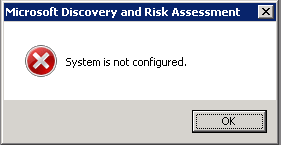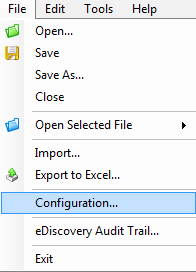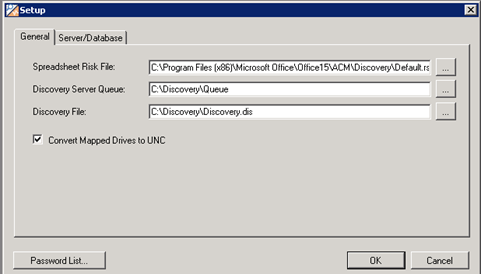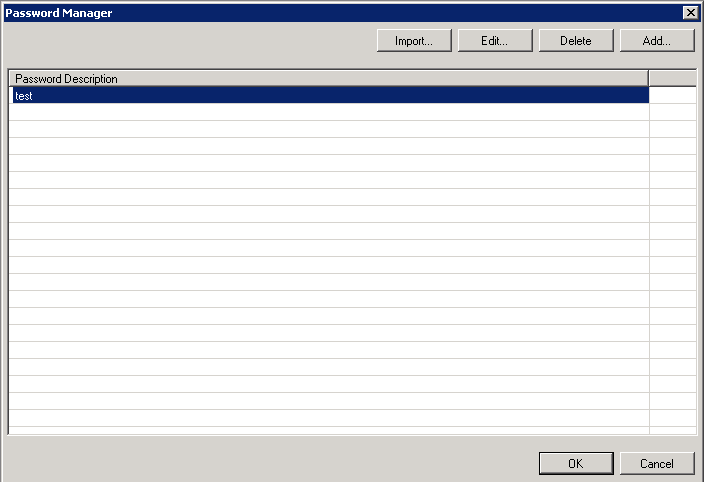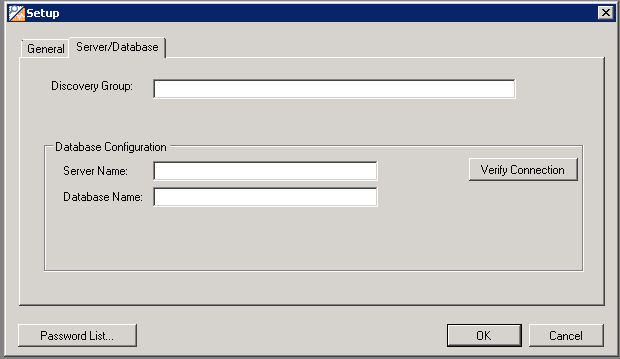Discovery and Risk Assessment Server 2013 - Configuration
Microsoft Discovery and Risk Assessment Server 2013 must be configured before first use. You will be presented with the following dialog box when you launch Discovery for the first time:
Initial Configuration
In the menu, click on File > Configuration to configure Discovery.
The General tab:
- Spreadsheet Risk File: The default risk algorithm to be used against spreadsheets under this profile. This is the risk assessment algorithm used when performing any manual risk calculation within the application. You can use the default risk file that comes with Discovery located here: C:\Program Files (x86)\Microsoft Office\Office15\ACM\Discovery\Default.rsk. Or you can create a custom risk file using the Risk Rule Designer (Tools > Risk Rule Designer).
- Discovery Server Queue: The scanned folder location for new discovery definition files (.dis). This allows unattended processing of discovery files to automate the process of grabbing files, calculating risk, and inserting results into the master inventory.
- Discovery File: The default discovery definition file used with this profile. This file stores the configuration that will open by default when clicking ‘Discover’. There can be multiple discovery files for different configurations.
- Convert Mapped Drive to UNC: When selected, the engine will convert all files discovered with mapped drive connections into UNC paths (i.e. L:\ to \\server\share). By default, it is selected.
Click on the Password List button for the password configuration:
- Password List: The password list used to process files when an “Open” password exists on a file. You can Add passwords manually or Import them from a text file. The stored passwords are encrypted.
Select the Server/Database tab:
- Discovery Group: The name that you want to use to represent yourself or your group when you run a discovery process
- Database Configuration: The server name and the database name for the SQL Server database that was created in Microsoft Audit and Control Management Server
Click here for additional configuration details: https://technet.microsoft.com/en-us/library/jj984598.aspx
